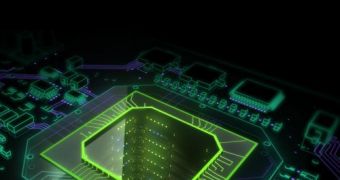NVIDIA's Tesla GPUs have been getting quite a share of positive responses lately. Not only can they be used to create supercomputers that completely overshadow other clusters in the area of power efficiency, but they are capable of massive parallel processing tasks that make them quite suited to heavy computing operations. More recently, the well-known provider of computing security solutions, Kaspersky, announced that it began to incorporate the Tesla S1070 into its infrastructure in order to improve client protection.
The Tesla S1070 is based on multi-core graphics processors and it boosts the rate at which unknown filers are identified. This implies that Kaspersky was able to more easily and quickly respond to new threats. The actual performance delivered by the GPU in the speed of the similarity-defining algorithm was no less than 360 times better than that delivered by a system running a Core 2 Duo central processor clocked at 2.6 GHz.
"As our company aims to provide the best protection to our users, we actively employ advanced technologies to accelerate computing," Nikolay Grebennikov, chief technical officer for Kaspersky Lab, stated. "We could not ignore the advantages of modern graphics processing units (GPU). In terms of efficiency they have long been far ahead of central processing units (CPU) аnd the tasks that they are capable of performing have gone beyond the scope of basic graphics processing. The architecture of the GPUs is optimized for the parallel processing of large data arrays and we have already started to use this attribute to provide our clients with an even better level of protection from new malicious programs."
Obviously, any performance boost to security solutions will be well received, especially soaring ones such as this. Kaspersky used the NVIDIA CUDA SDK development environment to redevelop and simultaneously perform the hundreds of thousands of operations included in the similarity algorithms (which compare files against the unknown program received by the Company's antivirus lab). This was possible thanks to the fact that the environment allowed for the use of standard programming languages when writing programs for NVIDIA graphics processors.
"The ever increasing sophistication of computer viruses continues to be a big problem for consumers and corporations alike," Andy Keane, general manager, Tesla business at NVIDIA, added. "Kaspersky Labs continues to stay ahead of the curve by employing very novel change management and file similarity detection techniques that, with the help of NVIDIA Tesla GPUs, can quickly identify new threats and update the anti-virus software."
NVIDIA's GPU computing solutions are set for further integration into Kaspersky's infrastructure for better client and, possibly, the company's own protection.

 14 DAY TRIAL //
14 DAY TRIAL //